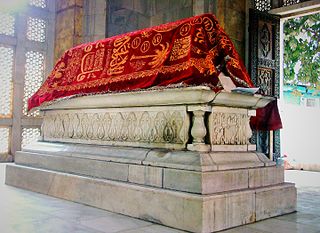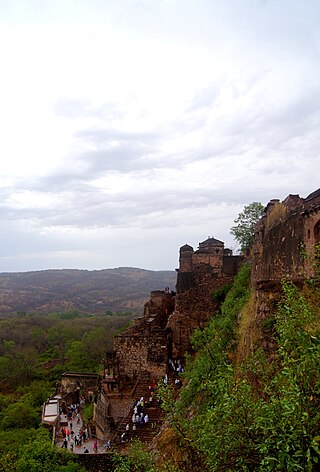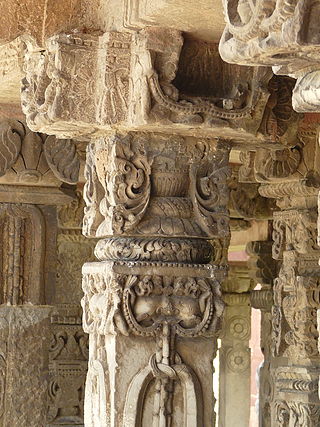
Jauhar, sometimes spelled Jowhar or Juhar, was a Hindu Rajput practice of mass self-immolation by women and girls in the Indian subcontinent to avoid capture, enslavement, and rape by invaders when facing certain defeat during a war. Some reports of jauhar mention women committing self-immolation along with their children. This practice was historically observed in the northwest regions of India, with most famous jauhars in recorded history occurring during wars between Hindu Rajput kingdoms in Rajasthan and the opposing Muslim armies. Jauhar was only performed during war, usually when there was no chance of victory. The term jauhar often connotes jauhar-immolation. Jauhar involved Hindu Rajput women committing suicide with their children and valuables in a massive fire, in order to avoid capture and abuse in the face of inescapable military defeat. At the same time or shortly thereafter, the men would ritualistically march to the battlefield expecting certain death, which in the regional tradition is called saka. This practice was intended to show that those committing it valued their honor more highly than their lives.

Mu'izz al-Din Muhammad ibn Sam, also known as Muhammad of Ghor or Muhammad Ghori, was a ruler from the Ghurid dynasty based in the Ghor region of what is today central Afghanistan who ruled from 1173 to 1206. Muhammad and his elder brother Ghiyath al-Din Muhammad ruled in a dyarchy until the latter's death in 1203. Ghiyath al-Din, the senior partner, governed the western Ghurid regions from his capital at Firozkoh whereas Muhammad extended Ghurid rule eastwards, laying the foundation of Islamic rule in South Asia, which lasted after him for nearly half a millennium under evolving Muslim dynasties.

Qutb ud-Din Aibak was a Turkic general of the Ghurid emperor Muhammad Ghori. He was in charge of the Ghurid territories in northern India, and after Muhammad Ghori's assassination in 1206, he established his own independent rule in Lahore, and laid the foundations for the Sultanate of Delhi.

Prithviraja III, popularly known as Prithviraj Chauhan or Rai Pithora, was a king from the Chauhan (Chahamana) dynasty who ruled the territory of Sapadalaksha, with his capital at Ajmer in present-day Rajasthan in north-western India. Ascending the throne as a minor in 1177 CE, Prithviraj inherited a kingdom which stretched from Thanesar in the north to Jahazpur (Mewar) in the south, which he aimed to expand by military actions against neighbouring kingdoms, most notably defeating the Chandelas.
The Ghurid dynasty was a Persianate dynasty of eastern Iranian Tajik origin, which ruled from the 8th-century in the region of Ghor, and became an Empire from 1175 to 1215. The Ghurids were centered in the hills of the Ghor region in the present-day central Afghanistan, where they initially started out as local chiefs. They gradually converted to Sunni Islam after the conquest of Ghor by the Ghaznavid ruler Mahmud of Ghazni in 1011. The Ghurids eventually overran the Ghaznavids when Muhammad of Ghor seized Lahore and expelled the Ghaznavids from their last stronghold.
Bayana is a historical town and the headquarters of Bayana tehsil in Bharatpur district of Rajasthan in India. Hindaun City is nearest city of Bayana - 33 km. Bayana is also known as the city of 'Vansasur'. It was the site of famous Important Battle of Bayana in 1527 between Rajput ruler Rana Sanga ruler of Mewar and Mughal emperor Babur.
Nasir-ud-Din Qabacha or Kaba-cha was the Muslim governor of Multan, appointed by the Ghurid ruler Muhammad Ghori in 1203.

Ranthambore Fort lies within the Ranthambore National Park, near the city of Sawai Madhopur in Sawai Madhopur district of Rajasthan, India. the park being the former hunting grounds of the Maharajahs of Jaipur until the time of India's Independence. It is a formidable fort having been a focal point of the historical developments of Rajasthan. The fort was constructed by Nagil Jat ruler Raja Sajraj Singh Nagil and later captured by several Rajput dynasties including Hada and Mewar and then the Delhi Sultanate captured it for a brief time. The fort provides a panoramic view of the surrounding Ranthambore National Park and is now a popular tourist attraction.

Timan Garh is a historical fort of the Karauli State, situated near Masalpur in Karauli District on old Agra-Karauli highway Indian state of Rajasthan.
The First Battle of Tarain, also spelt as the First Battle of Taraori, was fought in 1191 between the invading Ghurid army led by Muhammad of Ghor and the Rajput Confederacy led by Prithviraj Chauhan, near Tarain. The battle ended in decisive victory for the Rajputs; however, Muhammad of Ghor managed to escape and returned to Ghazni.

The Chahamanas of Ranastambhapura were a 13th-century Indian dynasty. They ruled the area around their capital Ranastambhapura (Ranthambore) in present-day Rajasthan, initially as vassals of the Delhi Sultanate, and later gained independence. They belonged to the Chahamana (Chauhan) clan of the Rajputs, and are also known as Chauhans of Ranthambore in vernacular Rajasthani bardic literature.

The siege of Chittorgarh occurred in 1303, when the Khalji ruler Alauddin Khalji captured and sacked the Chittor Fort, toppling the Guhila king Ratnasimha, after an eight-month-long siege. The conflict has been described in several legendary accounts, including the historical epic poem Padmavat, which claims that Alauddin's motive was to obtain Ratnasimha's beautiful wife Padmini; though this legend is considered historically inaccurate by most historians. Alauddin ordered the fort to be pelted with stones from his siege engines (munjaniqs). When the fort was stormed, Rajput women committed Jauhar while most of the warriors died defending the fort. The city of Chittor was completely sacked by Alauddin's army and several temples were desecrated.
The Battle of Andkhud, also spelt as Battle of Andkhui, alternatively known as the Catastrophe of Andkhud was fought in 1204 on the bank of river Oxus near Andkhoy in present-day Afghanistan. It was fought between the Ghurid forces of Muhammad of Ghor against the Qara Khitai forces led by Tayangu of Taraz. The battle ended in a complete rout of the Ghurids, although Muhammad of Ghor managed to escape the debacle after the intervention by Uthman of Qarakhanid.

The Ghurid campaigns in India were a series of invasions for 31 years (1175–1206) by the Ghurid ruler Muhammad of Ghor in the last quarter of the twelfth and early decade of the thirteenth century which lead to the widespread expansion of the Ghurid empire in the Indian subcontinent.
The siege of Lahore (1186) was part of the military expedition of Ghurids during which the Ghurid ruler Muhammad of Ghor annexed the principality of the Ghaznavids in Lahore after overthrowing the last Ghaznavid ruler Khusrau Malik.

Malik Bahauddin Tughril, commonly known as Bahauddin Tughril or Baha al-Din Tughril was a senior Turkic slave of the Ghurid ruler Muhammad of Ghor who was in charge of the Bayana region in the present-day Indian state of Rajasthan. He was admitted into the slave-household of the Ghurids during early reign of Muhammad of Ghor and gradually emerged as one of his eminent slave lieutenant along with Qutb al-Din Aibak, playing a significant role in the Ghurid conquest of northern Indian plain.
The Battle of Kasahrada (1197) was fought on 4 February 1197 between the Ghurid forces led by their slave-lieutenant Qutubuddin Aibak and the Rajput forces led by Chaulukya ruler Bhima II. It was fought in the present-day state of Rajasthan at Kasahrada, which is at foot of Mount Abu in the southern Aravali hills. Qutubuddin forces secured a decisive victory and sacked Anhilwara, thereby avenging the defeat of his master Muhammad of Ghor at the same site two decades earlier.

The siege of Gwalior was a military expedition of The Ghurid Dynasty aganist the Kachchhapaghata dynasty in 1196. The Ghurids under Qutb ud-Din Aibak captured Gwalior after defeating Sulakshanapala, the King of Kachchhapaghata. Sulakshanapala surrendered to Aibak, which led to the complete end of Rajput Kachchhapaghata dynasty











